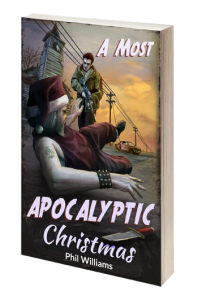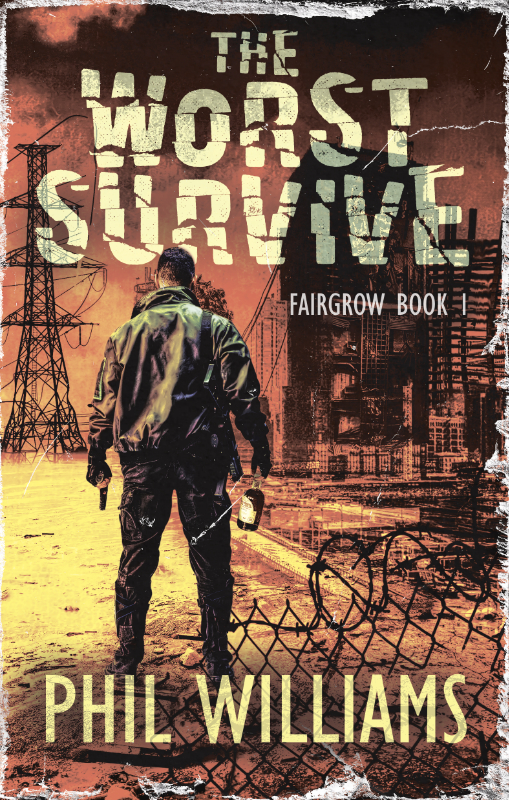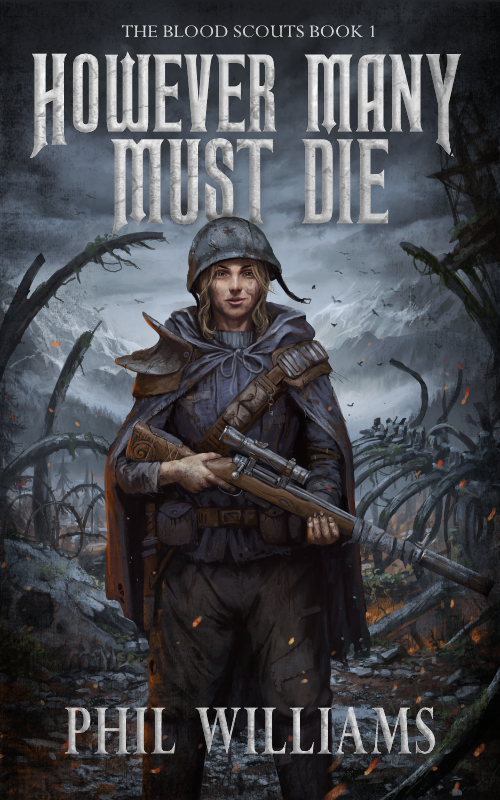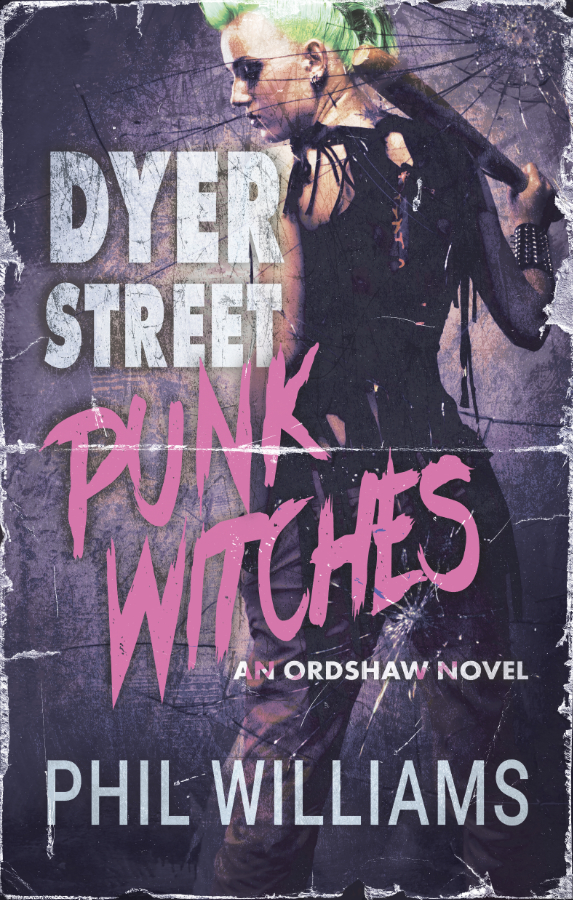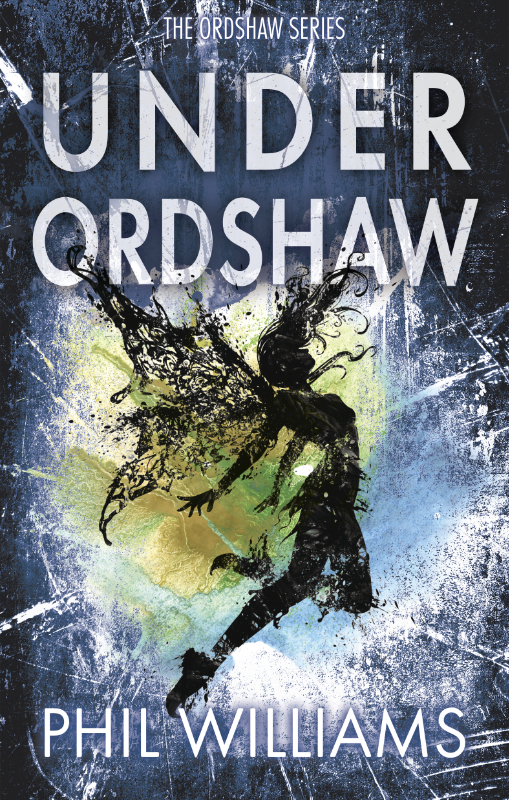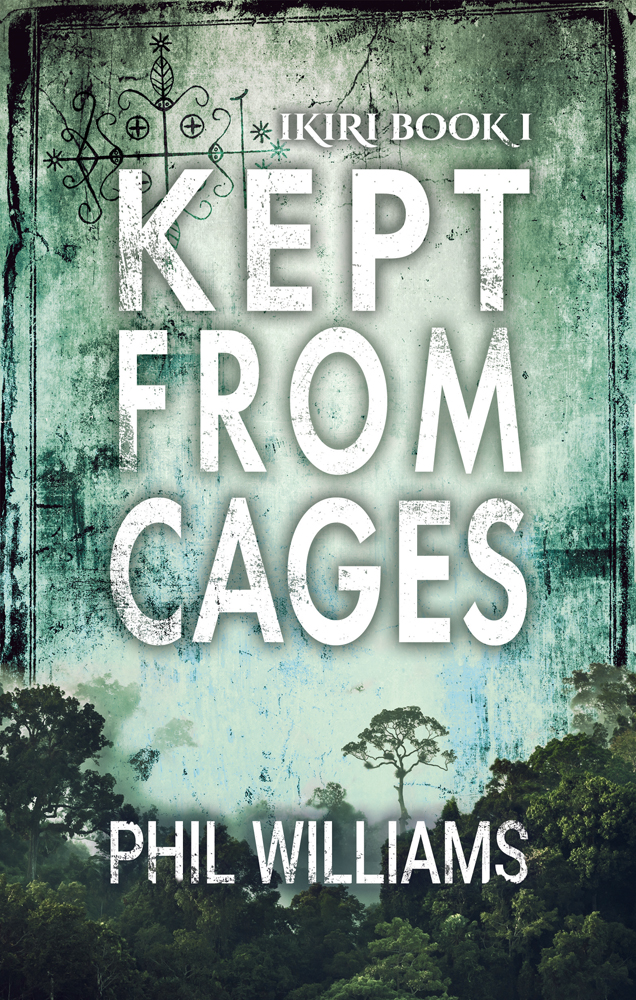How A Most Apocalyptic Christmas Came to Be
With Christmas around the corner, and The Worst Survive finally worming its way out in serial form, I thought it a good time to tell the story of the background for A Most Apocalyptic Christmas.
My wild and unusual dystopian action novella has, for some years, been the only content I’ve released from the world of Faergrowe, but it has a rather complex and curious history. Grab a mug of eggnog, come in and know it better…
What is A Most Apocalyptic Christmas?
In case you’re not familiar with the novella, it follows mercenary Scully on his way home for Christmas. He’s travelling between two of the few remaining cities in post-war America and his transport is ambushed, forcing him to defend himself and his fellow passengers.
A fight against regular bandits quickly descends into something far more horrible and surreal, however, when he seeks refuge in the seemingly abandoned town of Santa Claus, Indiana. A new kind of threat has taken root there, with a wickedly seasonal twist.
Now while this is all well and good for a self-contained action story, which A Most Apocalyptic Christmas is, there’s rather a lot more to its than there might seem, as it takes place in the world of the Faergrowe Series.
What is the Faergrowe Series?
The Faergrowe Series is ostensibly a group of five novels (and supporting material) set in an alternate future where a third world war has left America a wasteland with little more than a few barbaric city-states surviving. A Most Apocalyptic Christmas is a prequel to the series as a whole, set a couple of years before the main action, but it was written much later than the early material.
The series emerged as an amalgamation of two projects I’d been working on: a Mad Max/Judge Dredd-esque novel following a gang war in a desolate city-state, and a screenplay I’d written that combined a Blade Runner/Soylent Green-ish atmosphere with Jason Statham-like action. When I hashed out the lore to these together, the novel would become Book One in the series, The Worst Survive, while the screenplay would become Book Four: The Faergrowe Principle.
I wrote these over ten years ago, and spent a lot of time since nailing down the lore of the world and where the story was going. The Faergrowe Principle screenplay did quite well in a few scriptwriting contests, but ultimately never got picked up, and I never found time to release The Worst Survive. As I knew where the story was going from book one to five, I didn’t want to commit to putting one out until I could get them all in order.
I did, however, eventually find time to write a spin-off novella, to drum up some interest for the series, which happened to come along around Christmas. Hence, A Most Apocalyptic Christmas was born. So for such a seemingly simple tale, it has a wealth of background.
How the Series Fed the Novella
The biggest benefit of basing this small novella in a wider series was that I immediately had a fleshed-out main character. Scully is effectively seen as a hired gun caught up in a series of fights – but I could tell you his life story, and not just that but all the world history that surrounded it. This world, after all, diverged from ours in the 1980s, so there’s a lot of detail for how things were different. Most of the little comments and asides he makes have whole stories of their own behind them.
The other bonus was that I had a solid sense for the world-building before beginning. This is wasteland America, rife with plague, bandits and murderous fuel conglomerates. The throwaway details in A Most Apocalyptic Christmas have roots in things with much wider implications into the novels.
The most interesting, though, was how the background of the series led me to Santa Claus, Indiana.
I had whole military campaigns mapped out to explain how the war developed, and reshaped America. One of the key settings of the Faergrowe Series is New Oak City, an expanded dystopian mega city that was once Oklahoma, while the second major city left standing was Pittsburgh, now dubbed The Pitts. These were mostly chosen through geographical positioning, decided thanks to novel prep that depicted exactly where and when the major action of the war occurred.
Scully’s Christmas journey, then, was to take place between the Pitts and New Oak City, something I plotted using genuine road maps. And here a most magical thing occurred, as I was scouring the maps for a suitable town to plonk the story in. I discovered, roughly halfway between these cities, a little town called Santa Claus.
Serendipity is a strange and marvellous thing, and I have to say this was one of the most unusually apt finds I’ve come across in my writing. Given all the ins and outs that brought me to this story, with a mind for seasonal mayhem at this point on a map, it was truly bizarre to come across this town.
See, Santa Claus doesn’t just have a cute name, I found. It is literally a Christmas-themed town. And it was perfect for this story. (Though, I suppose I should note, apologies to the real town for the version that I have now created…)
And that is how years of writing and schemes for 5 books and a screenplay brought us to A Most Apocalyptic Christmas.
What Happens Next?
Well, I’ve kept sharing this novella, and talking about the potential of the rest of the series for a while, and I’m happy to say I’m finally rolling on with it. I’ve started serialising The Worst Survive, the complete first entry in the five-book series, through my new Patreon (you can check out the first chapter free here). Give it a few years and the complete series will be out, at last.
There was also always supposed to be more companion novellas, starting with A Most Apocalyptic Christmas 2: A Christmas Parole (a loose reimagining of A Christmas Carol, with a released prisoner in a dystopian hellscape). But time hasn’t allowed it yet. Here’s hoping for the future…
In the meantime, you can pick up A Most Apocalyptic Christmas here on Kindle (or from KU) – or if you can wait, it’s going to be free from December 21st to December 25th! It’s also now available free to all my Patrons, here.
(As a final aside: massive respect is also due to artist Bob Wright for the book cover, a beautifully composed vignette of seasonal violence.)

